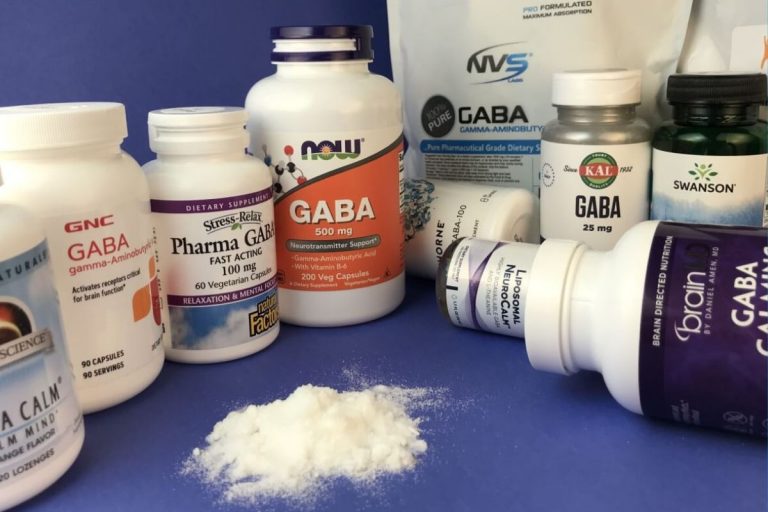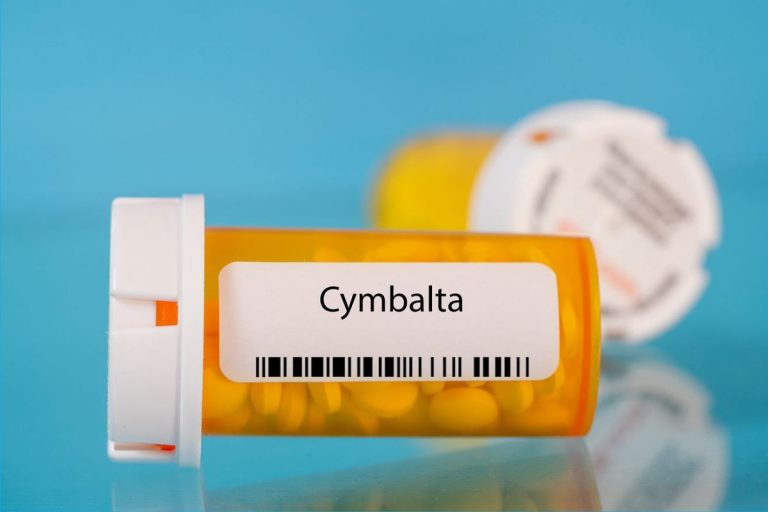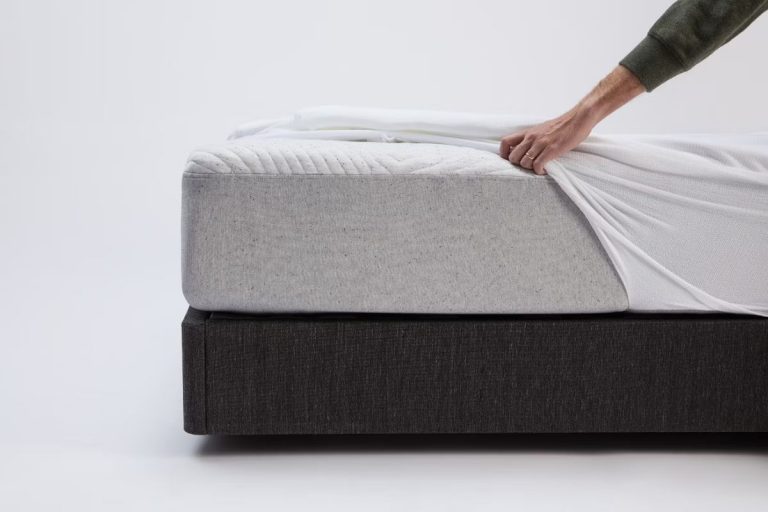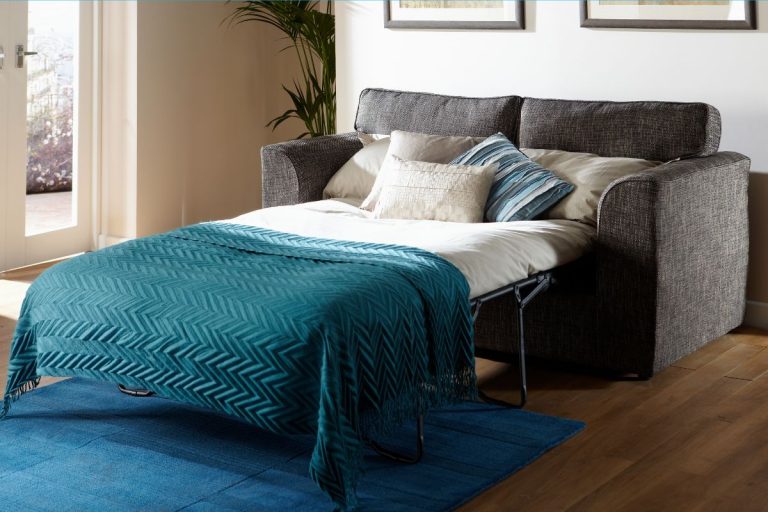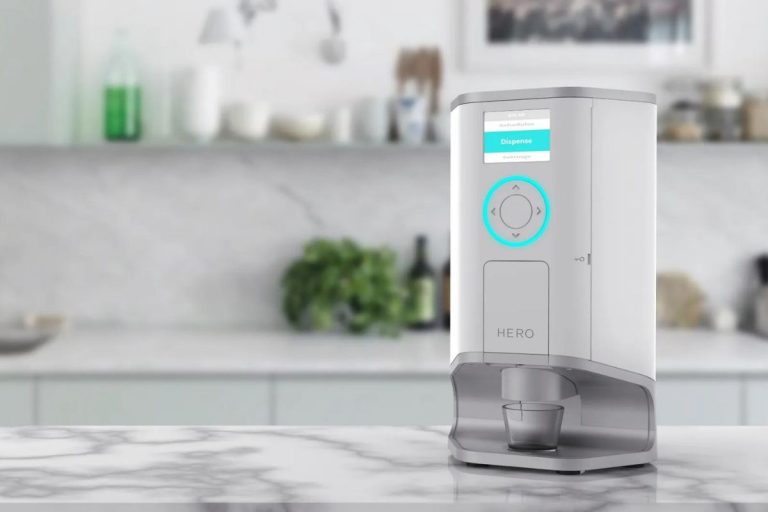Patients with chronic obstructive pulmonary disease (COPD) rely on oxygen concentrators for supplementary oxygen. Patients with obstructive sleep apnea may also be in need of such devices. Oxygen concentrators are incredibly important and useful devices that enable patients to breathe easily, sleep normally and overall to stay healthy.
These incredible devices filter the air in the room and remove all the dust, bacteria and other harming particulates, as well as provide a continuous flow of oxygen to the patient.
Oxygen concentrators are used to provide long-term oxygen therapy for patients at home. They are usually stationary devices, but there are also portable versions on the market. Therefore, in the following paragraphs, we will review the best portable oxygen concentrators on the market and see what they have to offer. So, let’s get started!
Some Basic Facts About Portable Oxygen Concentrators
What is a Portable Oxygen Concentrator?
A portable oxygen concentrator is a medical device, built to help individuals suffering from chronic obstructive pulmonary disease, sleep apnea and other obstructive and respiratory sleep conditions. Oxygen concentrators are usually stationary units, used privately or by clinics.
However, there are also portable units that are using batteries to charge during traveling. Portable oxygen concentrators receive air, clean it from dust, bacteria and other harmful particulates, and supply the patient with clean oxygen.
What are the Benefits of Portable Oxygen Concentrators?
Portable oxygen concentrators are extremely beneficial for the patients. Some of the most prominent benefits include;
- Mobility – as oxygen concentrators are usually stationary units, portable oxygen concentrators are mobile and easy to carry around. The units are usually lightweight and come with a specialized carrying case, external battery, power adapters, etc.
- Easy to use – oxygen concentrators can be difficult to use; the stationary units have tons of wires and buttons and can be easy to mess up. Portable units, on the other hand, are very intuitive and easy to use. They usually feature a display that shows all the important information (oxygen flow levels, battery status, notifications, and warnings). Moreover, they feature several essential buttons and almost no wires.
- Customizable – every portable oxygen concentrator is designed to fit an individual patient’s needs. Regardless of the problems or condition the patient suffers, these units are made to adjust easily to the patient’s needs, breathing pattern and levels of necessary oxygen flow and pressure.
- Provide independence – patients using portable oxygen concentrators claim these units have made it possible for them to stay independent. Because these units are portable and easy to carry around, patients are no longer tied to one place, having to rely on other people’s help with everyday stuff.
Portable Oxygen Concentrators and Coronavirus
CPAP machine and (portable) oxygen concentrator manufacturers have stated in the wake of the coronavirus outbreak that these devices can provide potential care to the infected patients.
Since respiratory failure is the main problem with the coronavirus infection, units like CPAP machines and oxygen concentrators can provide therapy and continuum of care as well as help with the COVID-19 therapy response.
It is important to point out that these units are not therapy solutions nor are they considered to be some kind of cure. Infected patients are primarily in need of medical respirators or ventilators, and units like oxygen concentrators or CPAP machines can provide temporary relief.
Moreover, such use of these units is not FDA approved, because the standard framework for respiratory support relies only on respirators or ventilators.
4 Best Portable Oxygen Concentrators 2022: Detailed Reviews
1. Philips Respironics SimplyGo Portable Oxygen Concentrator (best model with continuous and pulse dose modes)
The Philips Respironics SimplyGo portable oxygen concentrator is definitely one of the best on the market. It offers the power and features of a regular stationary oxygen concentrator, while also being portable and safe for in-flight traveling.
The concentrator is designed to be travel-friendly but also to provide all the necessary support for oxygen therapy. The SimplyGo portable oxygen concentrator is particularly known for its continuous and pulse dose flow modes, which make it that more versatile.
Advantages
- Portable design – the SimplyGo oxygen concentrator is made to be lightweight and compact (weighs 10 pounds, and is 10 inches long, 6 inches wide and 11.5 inches tall). This makes it a great choice for traveling, especially because it comes with a carrying case and a shoulder strap.
- Versatile oxygen modes – the SimplyGo unit provides both pulse dose and continuous oxygen modes. Continuous mode provides up to 2LPM of steady oxygen flow. On the other hand, pulse dose provides oxygen flow during inhalation only (up to 5 LPM) by monitoring the patient’s breathing patterns.
- Battery included – the SimplyGo unit comes with a standard battery that can power the unit up to 3.5 hours. The battery can be charged within the unit as well as externally.
- Easy use – the SimplyGo oxygen concentrator comes with a built-in display that ensures easy use and setup. The display is used to check the battery’s charge levels, the oxygen flow charts as well as alarms and notifications regarding low battery or breathing pattern (no breathing or high breathing alerts).
Disadvantages
- Too much noise – one of the most common complaints when it comes to the SimplyGo unit is that it makes too much noise. It can disrupt sleep, and with sleep apnea patients it can account for a sleepless night and negative therapy outcomes as well.
- Issues with the power cord – the unit requires the power cord to be plugged into the machine first, and then into the wall. If done otherwise, there can be a spark between the cord and the unit, which can be potentially dangerous around oxygen.
Additional Features
- Multiple power options – the SimplyGo unit comes with AC and DC power adapter (you can charge the battery from an AC or DC power source).
- Battery warranty – Philips provides a 90-day limited warranty for material defects
- FAA approved – the SimplyGo unit is FFA approved, meaning it is safe for airline travel.
The Bottom Line
If you’re looking for a reliable portable oxygen concentrator, then the Philips SimplyGo unit is definitely worth checking out.
The unit has a sleek and compact design, numerous useful features and comes with a warranted battery. It also comes with a transport bag, case and a shoulder strap for easier transport and travel.
2. ResMed MOBI Portable Oxygen Concentrator (best model with the longest battery life)
It can be hard to find a portable oxygen concentrator with highly durable battery life. Luckily, there is the ResMed Mobi portable oxygen concentrator which has a hefty 6-hour battery at your disposal.
It is not only its battery that makes the unit perfect for traveling, but also the design of the unit; the Mobi oxygen concentrator weighs only 5.5 pounds, which is a perfect travel lightweight. The Mobi unit provides features and characteristics that made ResMed units famous in the first place.
Advantages
- 6-hour battery life – unlike other portable oxygen concentrators, the Mobi unit comes with a battery that can last over 6 hours at one charge. Moreover, ResMed offers a 3-hour external battery as well for those in need of a stronger, more durable battery for traveling.
- Pulse dose flow – the Pulse dose flow system ensures a quick burst of oxygen when breathing is detected that is different from the continuous flow device. Moreover, is breathing stops completely, the Mobi unit is ready by ensuring a constant stream of oxygen until breathing is detected again.
- Lightweight – portable oxygen concentrators are usually lightweight, but the Mobi unit takes the crown as the most lightweight portable oxygen concentrator. At only 5.5 pounds, the unit is almost unnoticeable, easily carried on the shoulder and easily transported during traveling.
- Intuitive control panel – the Mobi unit features an intelligent and intuitive control panel, which allows the patient to track the therapy session and apply necessary changes when needed. There are appropriate LED lights, alarm indicators, notification signals, and the Mute button to disable the signals.
Disadvantages
- A bit louder than other units – the Mobi unit is surely quiet, producing only so-called hums. However, when compared to other units, and when taking into consideration the 44 decibels of noise, the Mobi unit might be louder than what you’re used to.
- Might take longer to charge – if you’re expecting the Mobi unit to charge its powerful battery quickly, you might be disappointed. It can take more than 4 hours for the battery to be fully charged.
Additional Features
- Charging cable with useful adapter – the DC charging cable comes with an adapter that enables the device to connect to the cigarette lighter port in a car or other transport forms.
- 5-year manufacturer’s warranty
- FAA approved – the Mobi unit is FFA approved, meaning it is safe for airline travel.
The Bottom Line
The ResMed Mobi portable oxygen concentrator is a great unit for those who travel long distances. With such a durable and powerful battery, and the ability to add an external battery, the Mobi unit offers up to 9 hours of charging life.
The unit is incredibly lightweight, compact and comes with a carrying case and a shoulder strap.
3. O2P Portable Oxygen Concentrator (best high-quality European standard model)
The O2P is one of the most energy-efficient, high-quality units on the market. The unit is one of the leading models in Europe. O2P is quick, quiet, lightweight and of course, made to be portable.
The unit has a sleek and modern design, ultimate efficiency and all the features patients might need during their oxygen therapy. There are also modern technology systems integrated withing the unit which follow the patient’s breathing patterns, enabling automatic adjustment and safety measures in case breathing becomes interrupted or completely stops.
Advantages
- Pulse dose delivery algorithm – this algorithm enables the unit to sense the patient’s breathing patterns from the cannula and adjusts the amount of oxygen flow according to the breathing patterns.
- Compact and sleek design – the unit has smooth edges and is overall compact and easy to carry around. It is constructed to be durable, long-lasting and hard to damage, so the patient can rely on it for years to come.
- Fast start-up – unlike other units, the O2P releases oxygen within one minute of the start-up. This makes it one of the fastest portable oxygen concentrators on the market.
- Easy to use – the unit comes with a 2.8 inch LCD display screen which readily shows alarms, notifications, device run-time, battery life, and oxygen flow settings. The screen and settings are intuitive and intelligent.
- Low-noise compressor – even though the unit produced 49 decibels of noise, the low-noise compressor reduces the noise and makes the device almost hard to notice in the environment.
Disadvantages
- Battery life – unlike some other units, one would not expect a premium portable oxygen concentrator to have such short battery life. However, O2P has a battery life of up to 3.5 hours.
- Might take longer to charge – another issue is that the battery takes approximately 5 hours to recharge. So, if you’ve expected this unit to be faster than other units, you might be disappointed.
Additional Features
- Triple filtration system – the triple filtration system includes a filter, sieve bed, and an oxygen filter to prevent dust, hair, pollen, and granule from entering the device.
- Low power consumption – the device is energy-saving, as it features a low power consumption system at only 90 Watts per hour.
The Bottom Line
The O2P is currently the smallest and lightest 1-liter portable oxygen concentrator. It is easily carried around and comes with a carrying bag with a shoulder strap.
The units also come with additional filters and a power cable in case your battery runs out. Because the unit is durable, premium quality, it is on the costly side, so make sure to pay attention to the price.
4. ResMed ActivOx 4L Portable Oxygen Concetrator (best for traveling)
ResMed is known for providing products having in mind their active users.
Especially when it comes to portable oxygen concentrators, ResMed has ensured to create a product that is purely intended for traveling; that product is the ActivOx 4L portable oxygen concentrator.
This might be the most lightweight unit, built to be compact and easily carried around. With only 4.8 pounds and a 4-way carrying case, the ActivOx unit is perfect for regular travelers.
Advantages
- Integrated internal battery – the ActivOx unit has a unique battery setup; it is the only unit that comes with an integrated battery. The integrated battery can be combined with the external battery to extend the battery life. So, instead of having 3.5 hours of battery life, you can have up to 10 hours when these batteries are combined.
- Lightweight and compact – as mentioned before, this unit is only 4.8 pounds in weight. It is incredibly lightweight and compact, which makes it perfect for traveling. Because the battery is integrated, the unit only needs the oxygen cannula and the carrying case.
- Intuitive and easy to use – the ActivOx is a unit made to be easy to use. It features an intuitive and intelligent digital display, that shows all the important information like battery status, flow setting, external power connection, notifications, warnings ad messages.
- Pulse dose flow – the ActivOx unit provides a pulse dose oxygen flow. This helps the battery life last longer. The pulse dose system allows oxygen flow during inhalations, to help avoid oxygen waste.
Disadvantages
- Charging duration – it might take more than 4 hours for the integrated battery to charge. Some patients have reported the charging duration to be even longer, especially when charging the external battery.
- Power adapters – patients outside the USA will need to purchase additional power supply adapters since the AC power supply is not made for international use.
Additional Features
- 4-way carrying case – the ActivOx unit comes with a carrying case that includes additional straps and connections for unit positioning. The carrying case allows you to carry the unit as a backpack, shoulder bag, waist bag and as a briefcase.
- Optional external battery – patients have the option to use an external battery as well. The external battery can be combined with the integrated. At longest, the external battery provides up to 5 hours of battery life.
The Bottom Line
If you’re looking for a specifically travel-friendly portable oxygen concentrator than the ResMed ActivOx is the unit for you. It has an exceptional battery life and is very easy to carry around.
Because it is lightweight and compact, you won’t even notice you’re carrying the unit. Because the price of this unit is not available for the general public, only patients with prescriptions, make sure to contact the manufacturer or an official retailer.
Best Portable Oxygen Concentrators – FAQs
Q: How Does the Portable Oxygen Concentrator Work?
Here’s a brief insight into the way portable oxygen concentrators work;
- The unit takes the air from the room.
- Through the motor and compressor, the oxygen is compressed in the concentrator.
- Oxygen is sent to the first sieve bed where it is filled with nitrogen.
- Then, oxygen is compressed again and moved to the second sieve bed.
- The air is now sent to the first sieve bed.
- Then oxygen and nitrogen are compressed together and release as regular air.
- The air is regulated in the product tank, through the pressure regulator and via the adjusting valve and flow meter.
Q: Portable Oxygen Concentrator Safety Precautions
Even though portable oxygen concentrators are built as medical devices, and are considered safe for use, there are few safety precautions and therapy safety options patients need to be aware of;
- Dryness and infection of the airway – one of the most common outcomes of the oxygen therapy is dryness and infection of the airway.
Dryness can occur in the nasal passage and the throat. Infection of the nasal passage can result in mucus which can further block the airway.
If you start experiencing any of the aforementioned symptoms, make sure to address the issue with your doctor before you continue the oxygen therapy.
- Bacteria build-up – because some portable oxygen concentrators are reported to have bacteria build-up in the nasal cannula, it is important to regularly change and clean the nasal cannula.
The nasal cannula is designed to be inserted in the nostrils. Therefore, this part can get pretty dirty very quickly. The nasal cannula is also made from plastic, so it can deteriorate quickly and become infected with germs, dirt, and bacteria.
Patients need to be aware of this problem and change the cannula regularly.
- Risk of fire – if the oxygen from the concentrator comes in contact with fire (for example from a lighter, a candle, etc.) it can help fuel and expand the fire.
This is a very dangerous situation that requires staying away from the fire and notifying the local emergency services. Moreover, make sure to prohibit smokers from staying around the concentrator, and make sure to avoid flammable chemical yourself when around the concentrator.
Q: Can you rent a portable oxygen concentrator?
Because portable oxygen concentrators are rather expensive (the lowest cost being between $1500 and $2000), some manufacturers and retailers allow monthly leases of the units.
Rental rates can go anywhere between $200 and $400 per month. Make sure to check the rental process and rates at the American Medical Sales and Rentals.
Q: How long do portable concentrators deliver oxygen on battery power?
For patients, it is important to know how long will their unit deliver oxygen on battery power. A good-quality unit will deliver oxygen between 4 and 6 hours on battery power.
Some units come with integrated batteries that can be connected to external ones, extending the battery life up to 10 hours. It is important to know that the battery powers last shorter on the highest setting, and lasts longer on the lowest setting.
Q: Are portable oxygen concentrators loud?
Oxygen concentrators are generally considered to be loud. Stationary units can produce up to 65 decibels, which makes them rather loud, especially during the night.
Portable oxygen concentrators are, on the other hand, less loud, but still, produce noise. Some units can produce up to 40 decibels at the highest setting.
Q: Are portable oxygen concentrators safe for air travel?
Portable oxygen concentrators are designed for air travel. They can be used on the plane and transported by air and are FAA approved. However, don’t forget to double-check whether a particular unit is approved by the FAA, just to avoid any potential problems.
